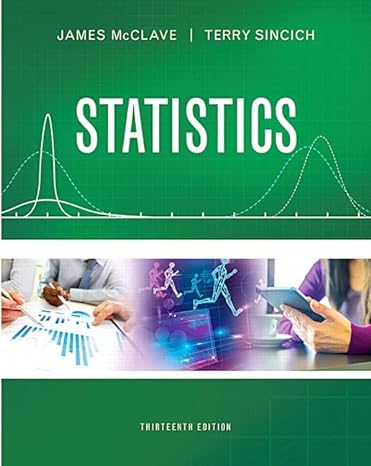Shopping vehicle and judgment. While shopping at the grocery store, are you more likely to buy a
Question:
Shopping vehicle and judgment. While shopping at the grocery store, are you more likely to buy a vice product
(e.g., a candy bar) when pushing a shopping cart or carrying a shopping basket? This was the question of interest in a study published in the Journal of Marketing Research
(Dec. 2011). The researchers believe that when your arm is flexed (as when carrying a basket) you are more likely to choose a vice product than when your arm is extended
(as when pushing a cart). To test this theory in a laboratory setting, the researchers recruited 22 consumers and had each push their hand against a table while they were asked a series of shopping questions. Half of the consumers were told to put their arm in a flex position (similar to a shopping basket), and the other half were told to put their arm in an extended position (similar to a shopping cart). Participants were offered several choices between a vice and a virtue (e.g., a movie ticket vs. a shopping coupon, pay later with a larger amount vs. pay now), and a choice score (on a scale of 0 to 100) was determined for each. (Higher scores indicate a greater preference for vice options.) The average choice score for consumers with a flexed arm was 59, while the average for consumers with an extended arm was 43.
a. Suppose the standard deviations of the choice scores for the flexed arm and extended arm conditions are 4 and 2, respectively. Does this information support the researchers’ theory? Explain.
b. Suppose the standard deviations of the choice scores for the flexed arm and extended arm conditions are 10 and 15, respectively. Does this information support the researchers’ theory? Explain.
Step by Step Answer:

Statistics Plus New Mylab Statistics With Pearson Etext Access Card Package
ISBN: 978-0134090436
13th Edition
Authors: James Mcclave ,Terry Sincich





